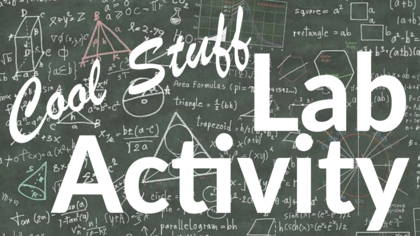Purpose
Traditional instruction and pedagogy of image formation is ineffective, often creating and reinforcing many misconceptions. The improved pedagogy in these non-traditional activities will demonstrate how pinholes and lenses improve our vision and produce precise photos.
Discussion
The Pinhole Camera (MS, HS, PS) activity will provide the basics of image formation. The concepts developed from this activity will then be applied to provide students a much-improved understanding of how lenses create images. This particular activity will clearly provide students an understanding of one of the key equations that are applied to lenses and images. This activity is largely conceptual, however one of the key equations related to images will be developed.
Images from Lenses (MS, HS, PS) is a unique activity that has been student tested in a high school classroom over several decades. Students will participate in a simple method to measure the focal length of converging lenses. This activity will demonstrate that each part of a lens acts as a pinhole camera and the converging lens forms an image by superimposing the individual pinhole images at a specific distance from the lens. The questions in Part 5 require a deep understanding of images. Extensive studies in Physics Education Research (PER) have shown that HS and university students are NOT able to correctly answer these questions. The improved pedagogy in the first 2 activities should give your students much deeper understanding about how the lens works!
The Mathematical Model of Images (HS, PS) provides students data to reinforce the lens equation. Additionally, the concepts of symmetry and limits are included. A variation of the lens equation is shown that predicts the results for 2 lenses.
Eyes and Cameras (MS, HS) is unique and relevant to students. They all have eyes and also cameras in their smart phones. A large percentage of students wear eyeglasses or contact lenses. This is mostly background reading, but includes two quick, but memorable adventures.
Ray Drawings for Images (Visual Model) (HS, PS) prevents many misconceptions. This activity is an improved model for making “ray diagrams.” Students will discover that the “pinhole model” is still useful for understanding the size and location of images. Students will learn that the object does NOT have to be directly in front of the lens. Students will appreciate that the lens does NOT have to be larger than the object! Students will also discover the required viewing position to locate virtual images.
Virtual Images (HS, PS) provides a unique and effective method to measure the position and size of virtual images. Students can apply their data to calculate the focal length of a diverging lens. Most teachers have never realized that it is possible to measure the di and hi for diverging lenses. Ask an experienced teacher how to find the focal length of a diverging lens and he/she will either look puzzled, answer “look on the lens box”, or suggest “maybe use lasers?”.
Fresnel Lens (MS, HS, PS) is a rather quick, but highly effective activity that will surprise everyone that real images do NOT require a screen to be seen and also that the images from lenses are actually 3-D.


